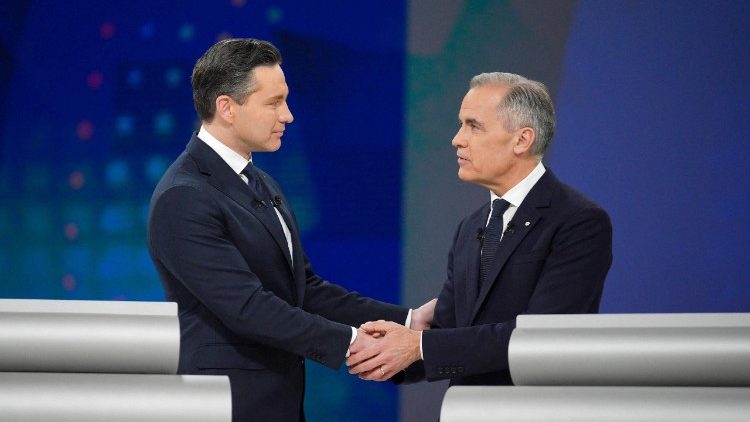“Politics should not be a lifelong career.” -Pierre Poilievre
The Liberal Party of Canada just did what few democratic, incumbent governments have pulled off in the last two years: Not only survive an election but improve its position. Four months ago, it was a doomed entity. Justin Trudeau’s popularity was sinking like the Titanic and the Conservatives under Pierre Poilievre led the polls by double digits. Canadians were angry and focused on inflation, the cost of housing, immigration, and desperate for any change.
But in less than 100 days the Liberals reanimated their party’s corpse and stole victory from the jaws of defeat.
They dumped Justin Trudeau and the carbon tax, instantly making key pillars of Poilievre’s strategy to gain power obsolete. The Liberals chose Mark Carney as their leader, a seasoned bureaucrat with a solid resume. His calm, reassuring demeanor appealed to Canadians, tired of politicians who resort to predictable slogans and rhetoric.
Carney led the Banks of Canada and England and his favourability rating contrasted sharply with Poilievre’s. The Conservative leader is not well liked by many, especially women, and his CV as a career politician since 2004 didn’t appeal to most Canadians in a national crisis. But given Justin Trudeau’s questionable record in a decade of economic woes and cultural cleavages, it’s likely all of this wouldn’t have saved the Liberals.
However, the chaotic actions of Donald Trump threw the Liberals the mother of all bones and they gripped it like a pit bull to save their skin. Trump’s insulting tweets, suggestions of Canada becoming the 51st state, and unprovoked tariffs tilted the advantage to the Liberal Party. Most Canadians put their earlier focus on affordability and housing aside and turned to Mark Carney, the man most felt was qualified to deal with Trump. Poilievre did not pivot in time or with enough strength to compensate: Either to avoid offending the extreme part of his base, or out of stubbornness to abandon his made-for-Trudeau election strategy.
The election became a contest between the Liberals promoting the fear of Trump and the Conservatives doubling down on Canada’s formerly dominant domestic issues. Carney won and Poilievre lost.
However, the polls narrowed between the parties during the campaign and their share of the popular vote was close (43% for the Liberals, 41% for the Conservatives). This was closer than most pollsters had predicted, and had the election lasted a week or two longer it’s likely Poilievre could have won. Either way, Pierre Poilievre nearly rode a wave of anger against Justin Trudeau’s former government to the office of Prime Minister.
But there’s an old Chinese proverb: “The water that carries the boat can also overturn it.” Poilievre lost not only the election but his riding. Perhaps threatening to fire much of the civil service and supporting the illegal Freedom Convoy didn’t win enough hearts and minds in Ottawa.
Despite this, Poilievre has vowed to remain leader. He is loved by the party’s base, supported by its caucus (so far), and he did significantly increase the Conservative popular vote and seat count in the election. Maybe he will continue as leader, wait for a moment of Liberal weakness (or foreign interference) to improve his position, and win the next election.
Or maybe the Conservative Party will succumb to internal strife, pivot to the centre, and find a more likable leader. Given Poilievre’s net negative rating among Canadians, the Conservatives’ tendency to expend leaders after a lost election, and the tension between national and provincial Conservative politicians, this isn’t a remote possibility. Perhaps an honest reckoning and rebrand could make the national Conservatives more electable and stop the Liberals from succumbing to their inclination to assume they’re entitled to rule Canada.
Meanwhile, Carney’s strong position owes much to the implosion of the NDP and the Trump threat. Most of the NDP base, fearful of a Poilievre government, fled to the Liberals to stop this. Trump’s tariff threats and undermining Canada’s sovereignty also distracted Canadians from Trudeau’s previous record and brought other voting blocks towards Carney. Perhaps initial opinions that Canada is becoming a two-party system or the Liberals have a decisive mandate to govern a full term have been overstated. The Liberals, NDP, and Conservatives have all been crushed in national elections (2011, 2025, and 1993 respectively) and few analysts doubt the American threat wasn’t decisive in saving the Liberal party.
The main challenge is if Carney can manage the chaos of Donald Trump, restore Canadian unity, and address issues of housing, affordability, and immigration. Because if he can’t show real progress in the next two years it’s doubtful there will be a fifth Liberal term.
Politics is the art of the possible, and polls, issues, and external dynamics can change. Just ask the Liberal Party of Canada. Because four months ago every political analyst predicted a Liberal annihilation rather than the most stunning comeback in modern Canadian history.
